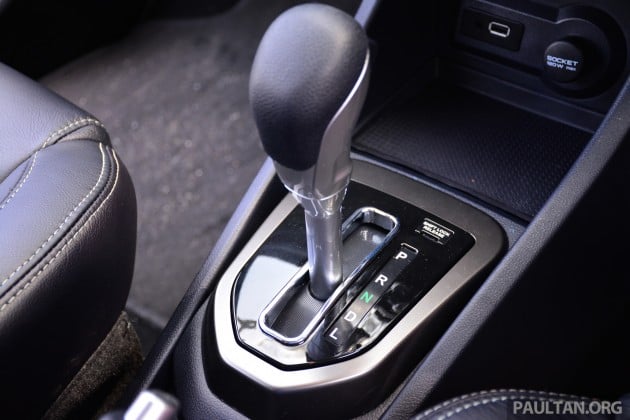Belgian transmission maker Punch Powertrain has introduced a new continuously variable transmission (CVT), succeeding the current VT2 and VT3 units. If these names sound familiar to you, that’s because both the older CVTs are being used in the Proton’s current crop of cars – the VT2 in the Saga, the VT2+ in the Iriz and the VT3 in the Exora, Suprima S and Preve Turbo models.
The VT5 transmission distinguishes itself from the other models by virtue of utilising a torque converter (like the G Design Shift CVT on the Honda Jazz and City) instead of a start-up clutch, to improve performance when pulling away from a standstill as well as on inclines.
This would rectify a major complaint on the CVTs on current Protons (along with the comparatively high fuel consumption, of course), even though the characteristics of the transmissions have been much improved since their first use on the Saga FLX in 2011.
Punch also claims the VT5 has the world’s largest ratio coverage for a single CVT, and has been developed for a wide range of cars in mind – the transmission has a large torque range of up to 250 Nm. This could perhaps help streamline Proton’s gearboxes, having a single CVT for both low-output naturally-aspirated models (Saga, Iriz) as well as high-output turbocharged variants (Exora Turbo, Preve Turbo, Suprima S).
Additionally, the VT5 is also said to be able to be fitted with technologies such as auto stop/start and sailing/coasting modes, possibly paving the way for more economical Protons.
Also unveiled is a new DT1 seven-speed dual-clutch transmission designed specifically for smaller vehicles, rated at up to 160 Nm. The compact gearbox is said to be more economical than any other transmission, while being significantly cheaper thanks to fewer components.
The short first gear is optimised for the low-torque applications foreseen for the DCT, for stronger, smoother acceleration, particularly on inclines. Nevertheless, the wide ratio coverage is claimed to deliver favourable fuel consumption.
The big question is, of course, whether Proton will actually use these transmissions. We’ve previously reported that the national carmaker is considering the use of torque converter CVTs for future applications, but the latest rumours actually suggest that Proton may be using Jatco transmissions instead, as the Nissan-owned company erected its own stand at the recent Alami Proton open day.
It has to be said, however, that all these developments happened before Punch built its own torque converter CVT, so it’s unclear whether this will affect Proton’s future plans just yet.
AD: Drive the Proton model of your dreams. Submit your details and Proton PJ will get in touch with you.
Looking to sell your car? Sell it with Carro.























AI-generated Summary ✨
The comments discuss the technology behind CVT transmissions, with some praising Punch’s new VT5 torque converter CVT for improved smoothness and reliability similar to established brands like Aisin and Jatco. There is debate over CVT efficiency, with many emphasizing that torque converter CVTs are less fuel-efficient but offer smoother low-speed driving. Some users support Proton incorporating Punch’s CVT, provided it’s reliable and fuel-efficient, while others prefer Jatco’s proven track record. Concerns about CVT jerkiness, wear, and reliability are common, with suggestions to use traditional automatic gearboxes like Aisin for better dependability. Overall, the comments show anticipation for advanced CVT technology in future Proton models, balancing efficiency, smoothness, and reliability.